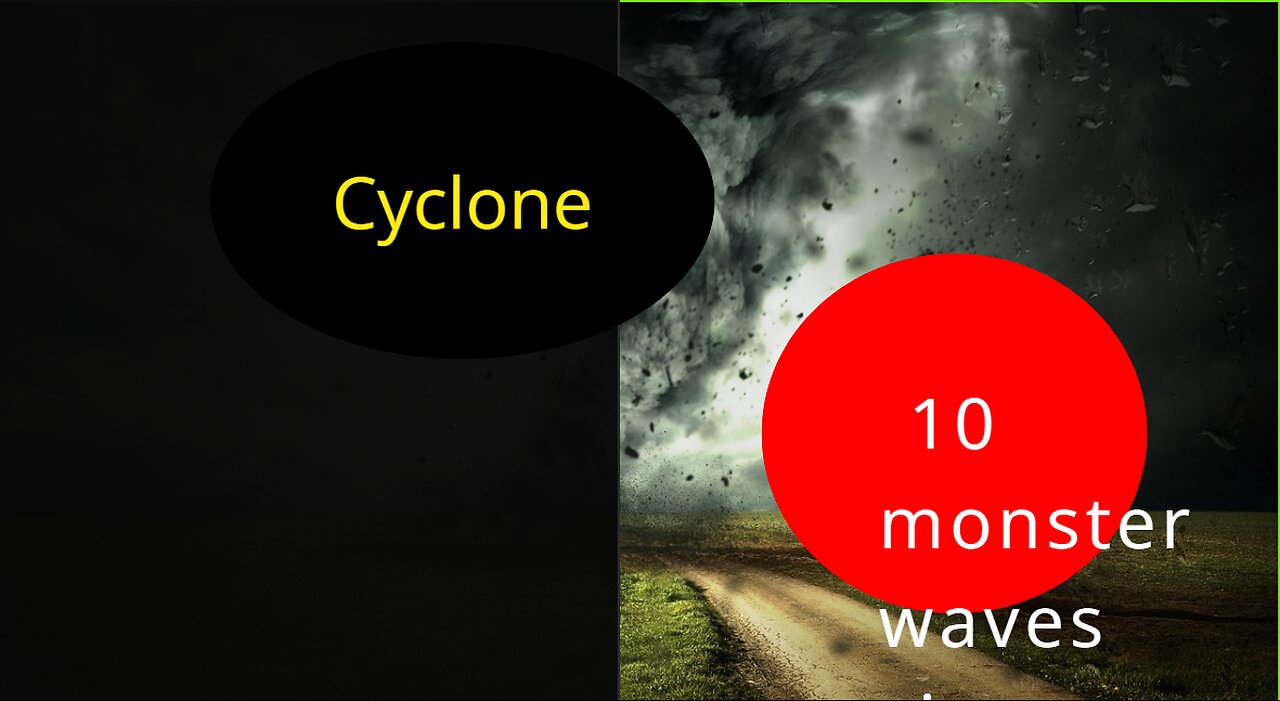Premium Only Content

Top 10 Monster Waves of All Time
In meteorology, a cyclone (/ˈsaɪ.kloʊn/) is a large air mass that rotates around a strong center of low atmospheric pressure, counterclockwise in the Northern Hemisphere and clockwise in the Southern Hemisphere as viewed from above (opposite to an anticyclone).[1][2] Cyclones are characterized by inward-spiraling winds that rotate about a zone of low pressure.[3][4] The largest low-pressure systems are polar vortices and extratropical cyclones of the largest scale (the synoptic scale). Warm-core cyclones such as tropical cyclones and subtropical cyclones also lie within the synoptic scale.[5] Mesocyclones, tornadoes, and dust devils lie within the smaller mesoscale.[6] Upper level cyclones can exist without the presence of a surface low, and can pinch off from the base of the tropical upper tropospheric trough during the summer months in the Northern Hemisphere. Cyclones have also been seen on extraterrestrial planets, such as Mars, Jupiter, and Neptune.[7][8] Cyclogenesis is the process of cyclone formation and intensification.[9] Extratropical cyclones begin as waves in large regions of enhanced mid-latitude temperature contrasts called baroclinic zones. These zones contract and form weather fronts as the cyclonic circulation closes and intensifies. Later in their life cycle, extratropical cyclones occlude as cold air masses undercut the warmer air and become cold core systems. A cyclone's track is guided over the course of its 2 to 6 day life cycle by the steering flow of the subtropical jet stream.
-
 1:02:37
1:02:37
State of the Second Podcast
14 hours agoTraveling Armed in America: Why is it so Complicated? (ft. Elite Tactical Systems)
5.66K1 -
 LIVE
LIVE
NEWSMAX
5 months agoNEWSMAX2 LIVE | Real News for Real People
2,026 watching -
 13:05
13:05
Actual Justice Warrior
3 days agoJudge Threatens To Jail Corrupt Super Mayor
25.5K27 -
 3:40
3:40
DecoyVoice
1 year agoThailand doesn't have time for unemployed behavior
39.4K27 -
 LIVE
LIVE
InnerStellarGaming
12 hours agoSOLO RANKED RAGE?? - SEASON 2.5 | MARVEL RIVALS (PART 26)
163 watching -
 11:09
11:09
Warren Smith - Secret Scholar Society
8 months agoThis Interview Changed How I See the World
50.1K13 -
 LIVE
LIVE
JFlintMedia
2 hours agoFinal Fantasy XIV mucking about
75 watching -
 2:05:07
2:05:07
Inverted World Live
9 hours agoDemon Dolls and Doomsday Fish | Ep. 52
105K6 -
 1:31:12
1:31:12
"What Is Money?" Show
1 day agoBuy Bitcoin for Your Bloodline w/ Robert Breedlove (WiM589)
43.6K3 -
 6:50
6:50
Dr. Nick Zyrowski
22 days agoApple Cider Vinegar Fasting Drink - Fasting Accelerator
40.8K7